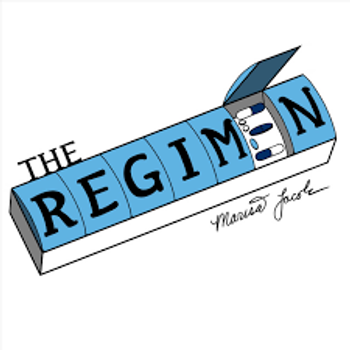
RFID, the future of drug security, may never replace bedside bar codes
Radio frequency identification tracking is invaluable in combating counterfeiting and the black market and represents the future of medication security. So says the Food & Drug Administration. But RFID will probably not displace the simplicity and effectiveness of bedside bar-code technology, according to experts, at least not in the foreseeable future.
"I believe that the bar code, like the movie theater, the legal tablet, and the telephone, will maintain its value for years to come," said Mark Neuenschwander, president of the Neuenschwander Co. in Bellevue, Wash., and an expert in medication-use automation. "RFID is now too expensive and the technology too complex to replace bar codes very soon."
RFID's potential value in inventory controlincluding fighting fake drugs and the illegal international trade in medicationscannot be overstated. Case in point: Several companies announced at the end of May that they've created the first commercial project using RFID to track drugs, specifically 100-tablet bottles of the controversial painkiller OxyContin. The project is led by Purdue Pharma LP, the drug's manufacturer, and the wholesale drug distributor H. D. Smith Corp. in Springfield, Ill. The initiative establishes what sponsors call an "electronic pedigree" system to track OxyContin, long a target of illegal traffickers. A "drug pedigree" is the paperwork that follows a product from manufacturer, to wholesaler, to pharmacy.
Based on the availability of RFID tags, Purdue plans to expand the implementation of RFID labels for all bottles of OxyContin Tablets, said Aaron Graham, Purdue's VP and chief security officer. Two technology companies are working with Purdue Pharma and H .D. Smith on the system: The tech company SupplyScape Corp., in Cambridge, Mass., created the software that produces the electronic pedigree and Unisys Corp., in Blue Bell, Pa., is implementing the technology for Purdue and H. D. Smith.
Officials at Wal-Mart, too, have said in public statements in the past few months that they, too, are studying RFID drug technology.
According to Graham, privacy is not an issue associated with the RFID tags attached to the labels of commercial OxyContin bottles. The tags are what he calls "passive"(as opposed to emitting a signal) and can be read only with a special scanner held within inches of the label. Purdue intends to donate 100 handheld scanners to major law enforcement and cargo-theft investigative groups throughout the country. The scanners can be used to read all packages utilizing similar RFID technology.
The initiative could serve as a national modelthe first to comply with pending state legislationaccording to company officials. Pharmacy industry officials are lauding the manufacturer's move. RFID technology is "an important new tool that will help our community pharmacists ensure the safety and authenticity of the products they dispense to patients," said Bruce Roberts, executive VP and CEO of the National Community Pharmacists Association, which represents 70,000 independent pharmacists.
That's a big order for an emerging technology, but government officials and experts agree that the time is right for RFID to play a significant security role for drug manufacturers. Purdue's move comes just a year after the FDA produced a seminal report, titled "Combating Counterfeit Drugs," which called for drug companies to use RFID to secure the movement of their products from packaging to sales. RFID technology places tiny tags with radio antennas on products and then reads and records at each stop along the supply chain. By the time a drug reaches a patient, there is a record of where it has been. The FDA report calls for mass serialization and RFID adoption by 2007.
Last month the FDA updated its report, saying, "Over the last year stakeholders have made tremendous progress in the development and implementation of electronic product codes and RFID. This is a huge endeavor that requires close collaboration among all constituents of the pharmaceutical distribution system. We have observed and supported this collaboration, and we continue to support it today."
In addition to the FDA's efforts, more than a dozen state legislatures are studying laws that will create an electronic record of the path a drug takes from manufacturer to patient, according to the National Conference of State Legislatures in Denver. Florida and Indiana recently passed pedigree laws that will become effective in July 2006. Although in those two states, and in pending legislation nationwide, pharmacy manufacturers can adopt either paper or electronic pedigrees, RFID technology is viewed by RFID experts as more reliable than a paper trail and more difficult to fake. And RFID enhances consumer safety, said Purdue officials, including "the redistribution of counterfeit, adulterated, relabeled, and diverted prescription drugs of unknown authenticity, efficacy, and safety."
Some wholesalers and pharmacy operators have said, however, that an electronic tracking system is too costly to be practical for manufacturers to install. The cost can be significant, according to Larry Shutzberg, chief information officer at Rock-Tenn Co. in Norcross, Ga. Addressing the overall cost of RFID technology to general manufacturers, Shutzberg said, "The range of total investment will vary widely between companies based on many factors-in most cases, companies are looking at investments that can easily reach into millions of dollars."
Purdue's initial investment is $2 million, and company officials said that cost will increase, but current threats to the integrity of its product are too great too ignore. "We're doing this to deter counterfeiting, reduce diversion, and help ensure the authenticity, safety, and integrity of our products," said Graham. "RFID provides us with the ability to create an electronic pedigree, or tracking mechanism, that translates into greater supply chain security and patient protection against counterfeits."
Bar-coding not going away
The value of RFID technology in inventory and pedigree control is indisputable, said Neuenschwander, but for health systems to wait for RFID technology to become readily available rather implementing bedside bar-code technology would be a big mistake.
For tracking drug inventory, RFID may be superior to bar-coding, Neuenschwander said. RFID readers can know instantly when an item is placed into an automated drug cabinet, what items are in a cabinet, and when an item is removed. And RFID offers some advantages for medication administration, he added: RFID wristbands can carry more patient information than bar codes and allow nurses to identify patients without having to wake a patient and maneuver his/her wrist into the bar-code gun's line of sight. Also, because RFID readers must be in the proximity of RFID tags, nurses must actually be with patients to perform the patient ID step of each drug administration. "This works against any work-around of nurses scanning patients' bar codes down the hall instead of at the bedside," he said.
But the technology also has disadvantages. If the read range is too wide, a nurse's handheld will pick up both patients in the room, compromising positive patient ID and interjecting possible confusion about which drugs are being read. Bar codes, on the other hand, read one item at a time, eliminating any confusion over which items do not belong to the patient.
For bedside administration, bar-coding remains an important asset and will for some time to come, said Neuenschwander. "First, it will be a long time before RFID appears on single-item drug packages, if ever. Second, the cost of applying RFID chips on drugs by manufacturers and hospital pharmacies is high. Even if the fantasy of the five-cent chip comes true, it's still too expensive and only calculates the cost of materials and not its application to the package. Finally, if they do find their way to all single-item drug packages, I believe that RFID chips will be in addition to, not in place of, bar codes," he said.
THE AUTHOR is a writer living in Gettysburg, Pa.
Newsletter
Pharmacy practice is always changing. Stay ahead of the curve with the Drug Topics newsletter and get the latest drug information, industry trends, and patient care tips.






































































































































